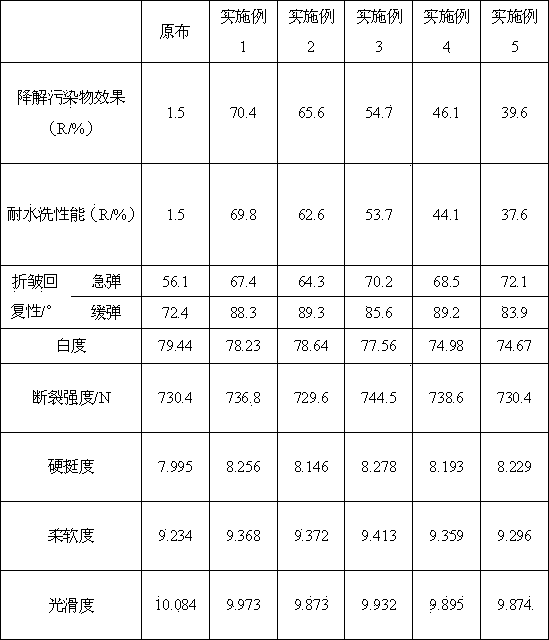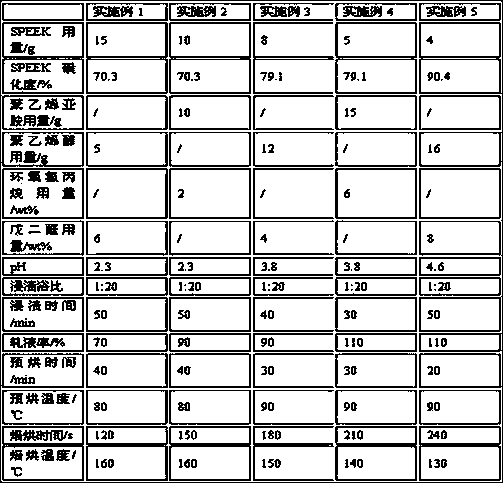Preparation method of self-cleaning cotton fabric based on light-induced polymer free radicals for degrading pollutants
A polymer and free radical technology, applied in plant fiber, textiles, papermaking, fiber treatment, etc., can solve the problems of poor fiber feel, easy to fall off, difficult fiber surface uniform dispersion, etc., to achieve excellent mechanical properties and high fastness Effect
- Summary
- Abstract
- Description
- Claims
- Application Information
AI Technical Summary
Problems solved by technology
Method used
Image
Examples
Embodiment 1
[0034] Manufacturing method of self-cleaning cotton fabric based on photoinduced macromolecule free radical degradation of pollutants:
[0035] Preparation of degradable pollutant cotton fabric:
[0036] 1) Add 15g of sulfonated polyether ether ketone with a sulfonation degree of 70.3% to 500mL of deionized water, and heat it to 50°C under an ultrasonic environment to dissolve;
[0037] 2) Add 5g polyvinyl alcohol into 500mL deionized water, swell in cold water for 2 hours, then heat to 85°C and stir to dissolve;
[0038] 3) Add the dissolved sulfonated polyether ether ketone into the dissolved polyvinyl alcohol, heat to 70°C, add HCl to adjust the pH to 2.3, add 6wt% crosslinking agent glutaraldehyde after 5 minutes, and stir vigorously 5min, make 1L finishing solution, and cool to room temperature;
[0039] 4) Soak a square piece of cotton cloth in the cooled finishing solution, control the bath ratio to 1:20, soak for 50 minutes and squeeze the liquid, one dip and one rol...
Embodiment 2~ Embodiment 5
[0054] Change the amount of SPEEK, H donor, SPEEK sulfonation degree, pH value, crosslinking agent dosage, impregnation time, extrusion rate, pre-baking temperature and time, and baking temperature and time in each 1L finishing solution.
[0055]
[0056]
[0057] Table 1, the technological formula of each embodiment
[0058]
[0059] The performance test of the cotton fabric after table 2, each embodiment process
PUM
 Login to View More
Login to View More Abstract
Description
Claims
Application Information
 Login to View More
Login to View More - R&D
- Intellectual Property
- Life Sciences
- Materials
- Tech Scout
- Unparalleled Data Quality
- Higher Quality Content
- 60% Fewer Hallucinations
Browse by: Latest US Patents, China's latest patents, Technical Efficacy Thesaurus, Application Domain, Technology Topic, Popular Technical Reports.
© 2025 PatSnap. All rights reserved.Legal|Privacy policy|Modern Slavery Act Transparency Statement|Sitemap|About US| Contact US: help@patsnap.com



